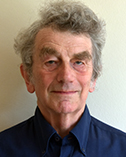
Joergen Christensen-Dalsgaard
Aarhus University
|
Primary Section: 12, Astronomy Secondary Section: 13, Physics Membership Type:
International Member
(elected 2021)
|
Biosketch
Jørgen Christensen-Dalsgaard is an astrophysicist recognized for his work in stellar physics, in particular the use of seismic techniques for the study of the Sun and other stars, opening entirely new avenues for the understanding of stellar evolution and the use of information on stars in other areas of astrophysics. He was born and grew up in Kolding, Denmark, and graduated with an MSc in astronomy from Aarhus University, Denmark, in 1975 and a PhD in astrophysics from University of Cambridge, UK, in 1978. Following postdoctoral positions in Liège, Belgium, Boulder, Colorado and Copenhagen, he returned to Aarhus University in 1984 as associate professor and is now professor of helio- and asteroseismology there. Since 1990, he is a member of the Royal Danish Academy of Sciences and Letters, and he is international member of the National Academy of Sciences.
Research Interests
Throughout his career, the work of Jørgen Christensen-Dalsgaard has focused on understanding the internal properties of stars through theoretical modelling and observations of stellar oscillations. He was centrally placed in the development of such seismic investigations of the Sun and stars, known as helio- and asteroseismology, including participating in the establishment of observational facilities on the ground and in space. Since 2011, he has led the Stellar Astrophysics Centre (SAC), a centre of excellence funded by the Danish National Research Foundation, where research is carried out on solar and stellar astrophysics, the properties of extra-solar planetary systems and astrobiology, as well as galactic studies based on asteroseismic stellar characterization. Key results include detailed investigations of solar and stellar internal properties and the precise determination of ages of many exoplanetary systems. SAC is responsible for the organization of asteroseismic investigations based on data from the Kepler and TESS missions, including setting up of archives of the relevant data from these missions, and is establishing a network of telescopes for groundbased asteroseismology, so far with nodes operating on Tenerife, Spain, and in Queensland, Australia. In addition, the group is strongly involved in the preparations for the ESA PLATO mission aimed at exoplanet research and asteroseismology.

